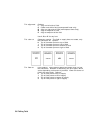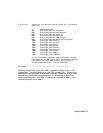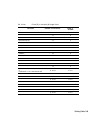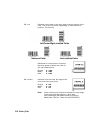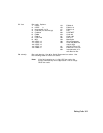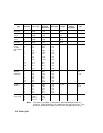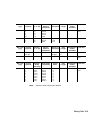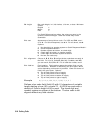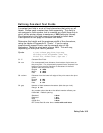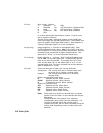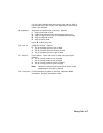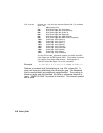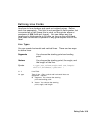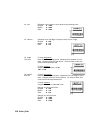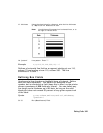
B9. height Bar code height, in 1/100 inches, 1/10 mm, or dots. Minimum
values:
English
1
Metric
2
Dots
1
For Quick Reference bar codes, the value you enter is the
symbol’s maximum height. Small bar codes may not be
scannable.
B10. text Appearance of text with bar code. For UPC and EAN, use
1
or
5 - 8
. For Quick Response, use
0 2.
For all others, use
8
.
Options:
1
No check digit or number system or Quick Response Model 1
2
Quick Response Model 2
5
Number system at bottom, no check digit
6
Check digit at bottom, no number system
7
Check digit and number system at bottom
8
No text, bar code only
B11. alignment Choose
L
,
R
,
C
,
B
or
E
to align the bar code data correctly in
the field. For I2 of 5, Code 39 (Mod 43), Codabar, and MSI,
you can use
L
,
R
,
C
,
B
or
E
. For all other bar codes, use
L
.
B12. field rot Field rotation. Field rotation rotates the whole field, not just
the characters. Rotation is affected by the pivot point, which
varies depending on how text is justified. Lower left corner of
field is the pivot point. Options:
0
Top of field points to top of supply
1
Top of field points to left of supply
2
Top of field points to bottom of supply
3
Top of field points to right of supply
Example
B,3,12,V,150,70,1,2,80,7,L,0
p
Defines a bar code field (field #3) with 12 characters of variable
length starting at row 150, column 70. A UPCA bar code with a
density of 2 and a height of 80 is used. The check digit and
number system are shown at the bottom. The bar code is left
aligned without any field rotation.
3-14
Defining Fields



